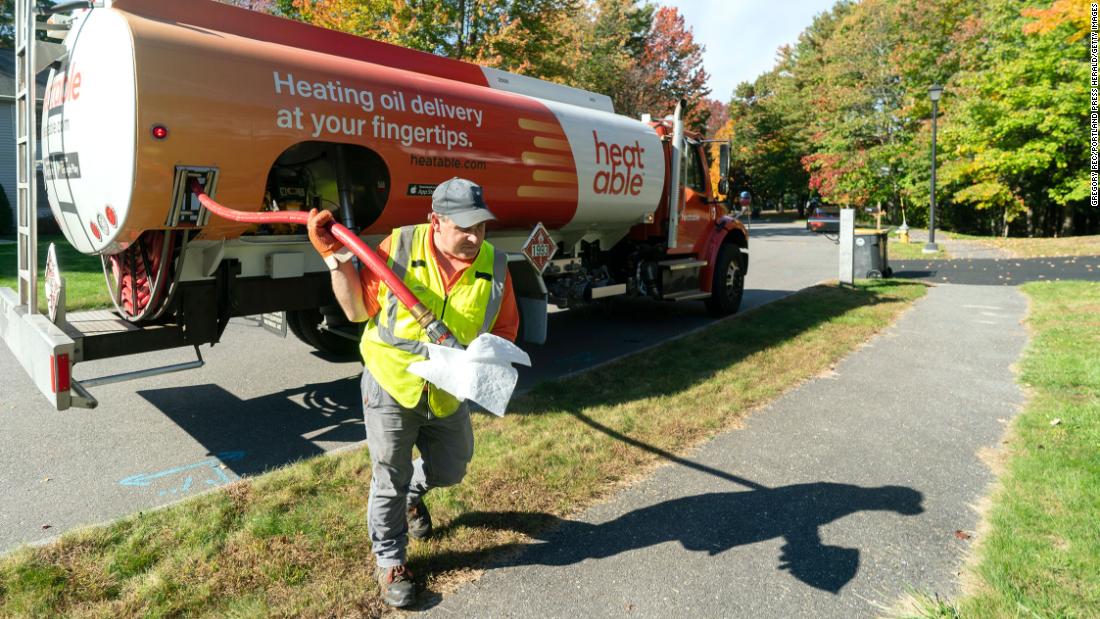LIHEAP: Record Federal Home Heating Aid Available, But Probably Not Enough Yet

Yet this is probably not enough to meet the need.
Additionally, states, municipalities, and community organizations can rely on other coronavirus relief measures, including the roughly $ 45 billion rent relief program and the $ 350 billion program. billion dollars from the state and Local tax relief fund – to meet the energy costs of houses.
The increase in aid comes as families have yet to dig the deep hole they fell into in the pandemic’s first year. Americans are up to $ 35 billion behind on their natural gas and electricity bills, up from an average of $ 12 billion, said Mark Wolfe, executive director of the National Energy Assistance Directors’ Association. The amount has since fallen to around $ 20 billion.
“During the winter heating season, the cost of gasoline and home heating – the extra costs – will be more than what the average family spends on Christmas presents,” Wolfe said. “The prices have gone up so high and so fast.”
The increased costs also mean that the additional federal funds will not go as far as hoped when the relief bill was signed in March.
Provide assistance
The deployment of this unprecedented aid is another matter.
About 5 million households typically receive assistance with heating bills from LIHEAP, but that number could double with the additional assistance, Wolfe said. Those earning either 150% of the federal poverty line, or about $ 39,750 for a family of four, or 60% of their median state income, whichever is greater, is eligible.
Pandemic relief funds, on the other hand, have different eligibility criteria and can help a wider range of households, including middle-income families who are not eligible for LIHEAP.
But many state and local governments, along with their community partners, are overwhelmed by demand and understaffed. They need to update their applications and systems to manage relief money, identify struggling families who may benefit, and encourage them to apply. And they are calling on more local groups and utilities to make it known that more help is available.
Another complication is that some people do not consider themselves to be low income or do not want to be seen as such. So they don’t find out about LIHEAP.
“We’ve worked hard to make sure we’re in touch with vulnerable families who may never have been vulnerable before,” said Katrina Metzler, executive director of the National Energy & Utility Affordability Coalition.
Connecticut, for example, is working with its utilities to identify tenants who are behind on their bills but are not receiving rental or utility assistance. These residents then receive emails and robocalls to put them in touch with help. Thousands of people have already been helped, Governor Ned Lamont, a Democrat, said in a statement.
Utilities are looking to help their struggling customers so they don’t have to raise everyone’s tariffs to make up for backlogs, said Juan Alvarado, director of energy analysis for the American Gas Association.
“A lot of public services are redoubling their efforts to try to help people realize this and get the money they need,” he said. “It benefits everyone, including utilities.”
In Iowa, the IMPACT Community Action Partnership has stepped up its social media posts, particularly Facebook and Twitter, to educate residents about the enhanced aid, said Anne Bacon, executive director of the nonprofit that serves five counties in the central part of the state. It is also reaching out to other agencies, including public health departments, to get the word out.
Need extra help for the dwarves
While the extra billions of dollars are useful, they are not enough to completely clear the backlogs and cover the costly heating season ahead.
Agencies also need to balance giving more money to fewer people or less money to more people in need – typically about one in six households eligible for LIHEAP are helped.
Iowa receives an additional $ 78 million in LIHEAP aid, on top of the $ 54 million it receives from the traditional program, said Bill Marquess, LIHEAP program planner for the state. This allows it to provide larger grants to families to help them pay overdue bills and furnace repairs or replacements.
The IMPACT community action partnership typically helps up to 14,000 households access LIHEAP funding. He expects to work with around 650 to 700 additional families this season, Bacon said. But he could do even more.
“Even with the large increase in funding available, if every qualified household in need of assistance applied for it, the funding would not be sufficient to meet the needs,” she said. “In a typical year, our agency serves less than 30% of eligible families.
The association is also faced with staff constraints. It has struggled to retain enough employees to meet demand, said Bacon, who would like to hire 10 more workers. And it’s not easy to find people with the right skills and empathy for the job.
For some people, the full impact of the price hike is yet to come. Those that heat with oil and other retail fuels typically use half of their supply between mid-December and mid-February, said Sean Cota, CEO of the National Energy & Fuels Institute.
NEFI is sending out alerts and developing a policy document so that the roughly 11,000 people in the industry can help customers who may be struggling with the highest bills this season.
“If they need more help, this is the year there is more help available,” Cota said.






/https://www.thestar.com/content/dam/thestar/news/gta/2021/11/25/want-to-own-a-home-but-dont-have-the-money-this-toronto-tech-firm-lets-you-become-an-owner-resident-for-25-per-cent-down/taylor.jpg)